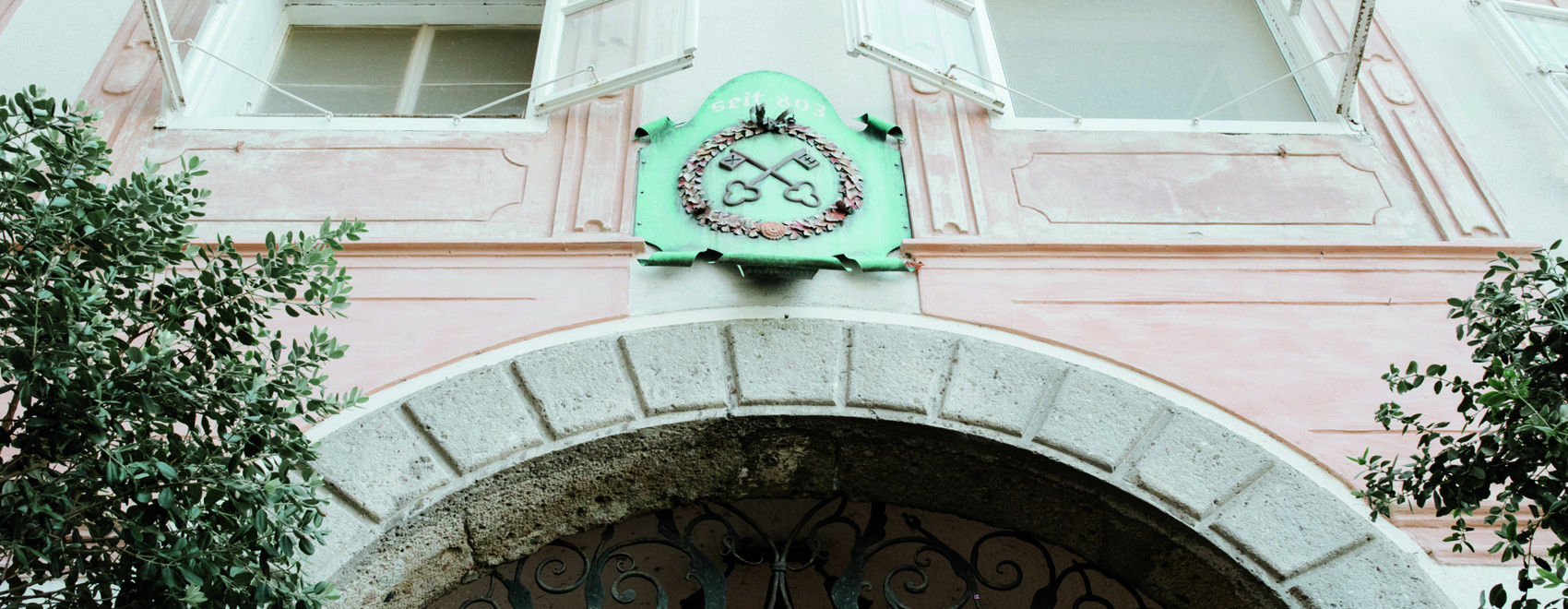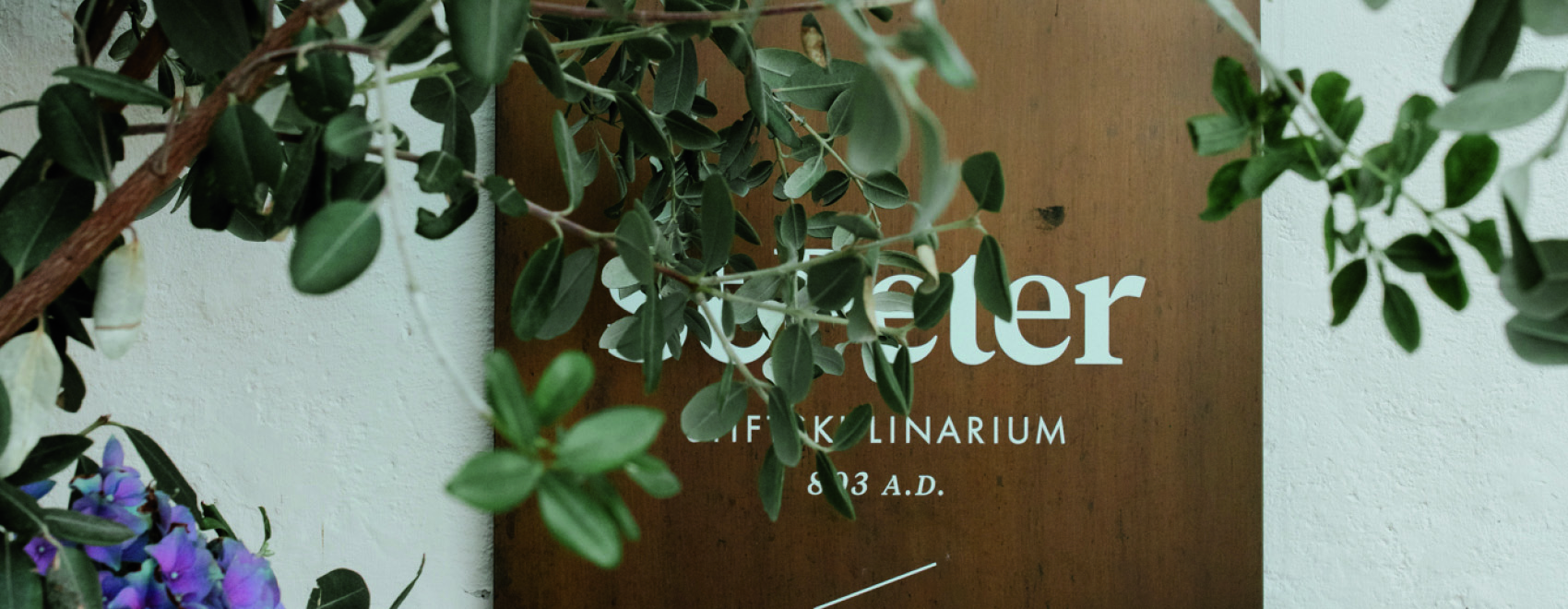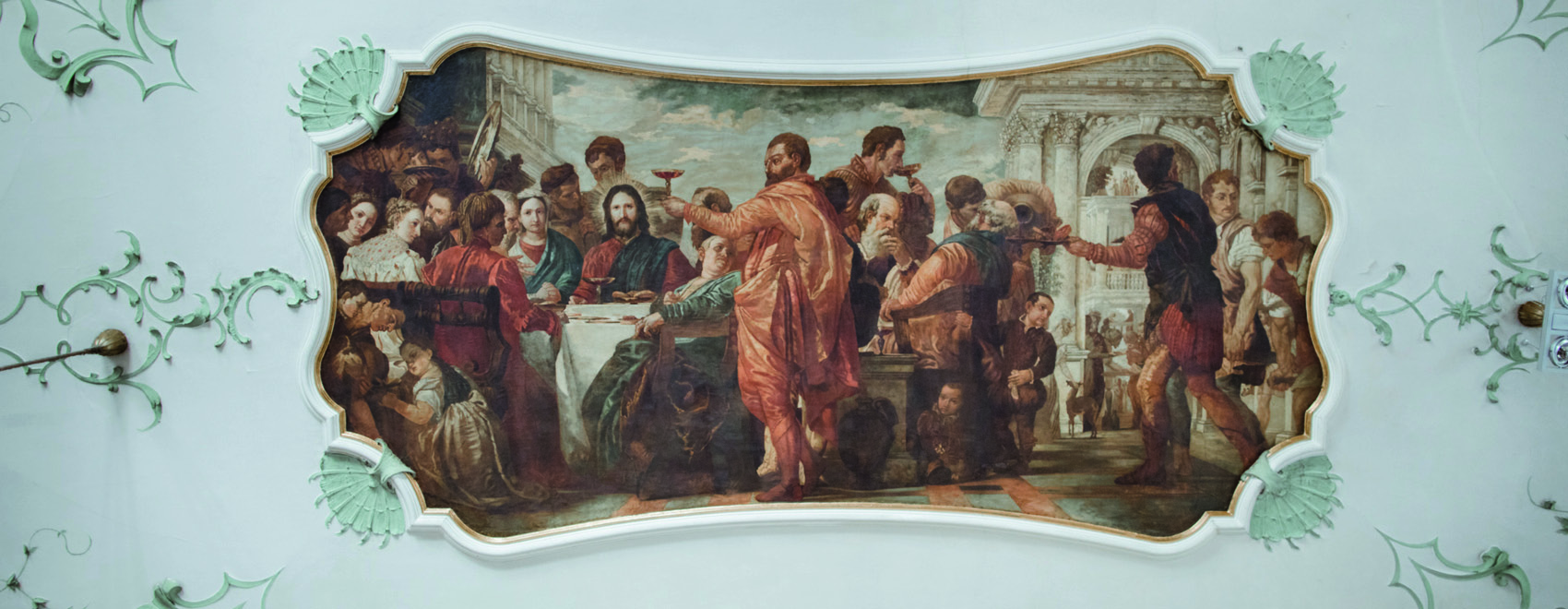EXPERIENCING HISTORY
The historical roots of the St. Peter Stiftskulinarium go far back into history. The legendary location is the oldest restaurant in Europe and is one of the oldest walls in Salzburg. In fact, even Faust is said to have visited the “Stiftskeller” in person.
The Stiftskulinarum is situated in the heart of Salzburg old town in the monastery complex of the Benedictine archabbey of St. Peter. In the year 803, the St. Peter “abbey cellar” was mentioned in the records for the first time by Alcuin of York, a courtier of Charlemagne. In the 11th century, the focus was on the wine trade: Leopold VI the Glorious took the monastery of St. Peter under his protection and permitted the export of 40 wagon loads of wine from Austria per year and made a promise. It was in 1517 that Abbot Wolfgang Walcher built a rock cellar with access to the abbey court.
The excavated rocks were used in the construction of the mill at the abbey bakery. In 1527 the abbot had Chillian Pitricher the wine cellar extended by a second rock cellar. Waggoners and craftsmen received a “wine penny” or “house drink” for their work. So a wine tavern gradually turned into a hotel. In the years soon after 1900 Abbot Willibald Hauthaler began to renovate the Peter cellar – it was at this time that the “Willibald Arcades” were also built. So step by step the rooms were adapted to the requirements of the times – so it’s a place whose walls are sure to be hiding more than one exciting story.
1200-year tradition…
ESTABLISHED in 803 AD
First documented mention of St Peter’s Stiftskeller by the scholar Alcuin of York, one of Emperor Charlemagne’s advisors. Our restaurant is therefore considered to be the oldest inn in Europe.
1300
St Peter’s Stiftskeller enters the history of literature thanks to a 14th century poet and composer known as ‘The Monk of Salzburg’.
1510
The cellar area is significantly extended, and considered by Faust to be a place of quality.
1720
The Stiftskeller changes, as patrons now include nobility, clergy and the emerging middle classes.
1763
At this time Michael Haydn lived on the top floor of the Stiftskeller.
1803
The Stiftskeller is awarded the right to brew and serve beer. Previously, the monks of the Stiftskeller had only been allowed to serve their own wines.
1809
French troops are assigned quarters in the Stiftskeller during the Napoleonic wars.
1903
Abbot Willibald Hauthaler oversees the construction of the Baroque Hall and expansion of the ‘Willibaldhöhle’ vault
1918
The monastery cellar is looted during the First World War.
1992
At 25 years of age Claus Haslauer takes on a major challenge, becoming the first ever leaseholder of St Peter’s Stiftskeller.
1996
World première of the famous Mozart Dinner Concerts in the historic Baroque Hall. These have since enjoyed great popularity and are performed daily.
1999
Veronika Kirchmair-Haslauer begins to update and redesign the restaurant’s interiors.
2003
The Stiftskeller celebrates its 1200th anniversary.
2008
Extensive conversion work ensures the kitchen and taproom infrastructure at St. Peter’s Stiftskeller becomes state of the art.
2010
St Paul Soul Food Catering joins the St Peter Stiftskeller family. The highly successful catering concept guarantees a bespoke, exclusive and professional service for every event.
2013
Redesign of the Willibaldhöhle vault and the arcade courtyard.
2014
Sous vide and charcoal barbecue are added to the St. Peter Stiftskeller repertoire.
2017
St. Peter’s Stiftskeller is renamed ‘St. Peter Stiftskulinarium’ and awarded two Gault Millau toques.
2020
Two restaurant concepts are launched at St. Peter’s Stiftskulinarium in May 2020: ACHTHUNDERT&DREI offers international fine-dining cuisine, while PETER serves Austrian and Mediterranean specialities.
2021
St. Peter’s Stiftskulinarium is awarded the ‘Salzburger Landeswappen’ (coat of arms) for outstanding achievements on behalf of the state of Salzburg.
Art is long!
And our lives are short
Vers 558 f. / Faust




